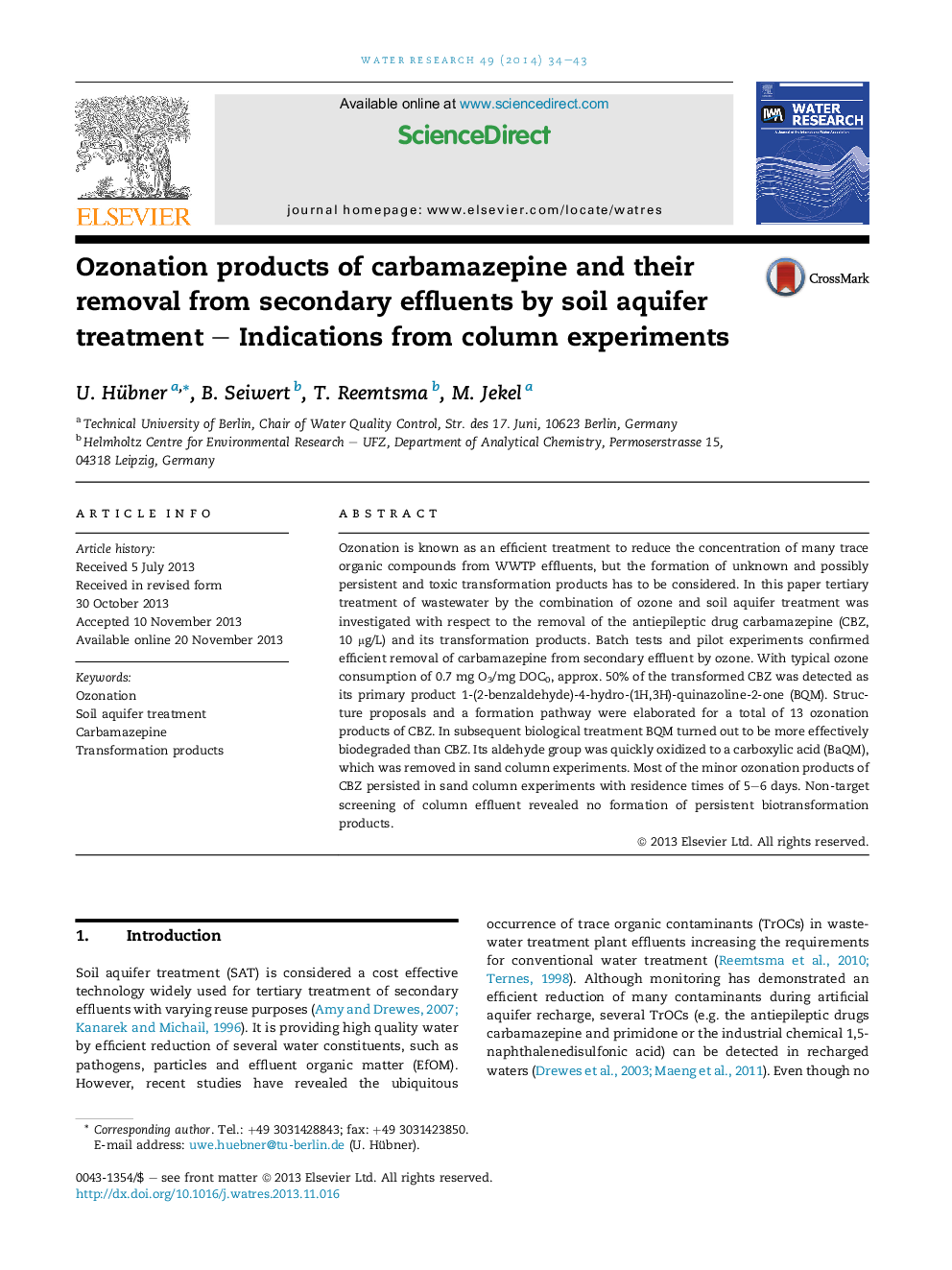| Article ID | Journal | Published Year | Pages | File Type |
|---|---|---|---|---|
| 4481689 | Water Research | 2014 | 10 Pages |
•Evaluation of carbamazepine removal during combined ozone-SAT treatment.•Four major and 14 minor products detected from reactions with O3 and OH-radicals.•Three of the four major products were biodegradable in sand columns.•Several minor products persist in the sand columns.•According to non-target analysis no stable products formed by biodegradation.
Ozonation is known as an efficient treatment to reduce the concentration of many trace organic compounds from WWTP effluents, but the formation of unknown and possibly persistent and toxic transformation products has to be considered. In this paper tertiary treatment of wastewater by the combination of ozone and soil aquifer treatment was investigated with respect to the removal of the antiepileptic drug carbamazepine (CBZ, 10 μg/L) and its transformation products. Batch tests and pilot experiments confirmed efficient removal of carbamazepine from secondary effluent by ozone. With typical ozone consumption of 0.7 mg O3/mg DOC0, approx. 50% of the transformed CBZ was detected as its primary product 1-(2-benzaldehyde)-4-hydro-(1H,3H)-quinazoline-2-one (BQM). Structure proposals and a formation pathway were elaborated for a total of 13 ozonation products of CBZ. In subsequent biological treatment BQM turned out to be more effectively biodegraded than CBZ. Its aldehyde group was quickly oxidized to a carboxylic acid (BaQM), which was removed in sand column experiments. Most of the minor ozonation products of CBZ persisted in sand column experiments with residence times of 5–6 days. Non-target screening of column effluent revealed no formation of persistent biotransformation products.
Graphical abstractFigure optionsDownload full-size imageDownload high-quality image (97 K)Download as PowerPoint slide
